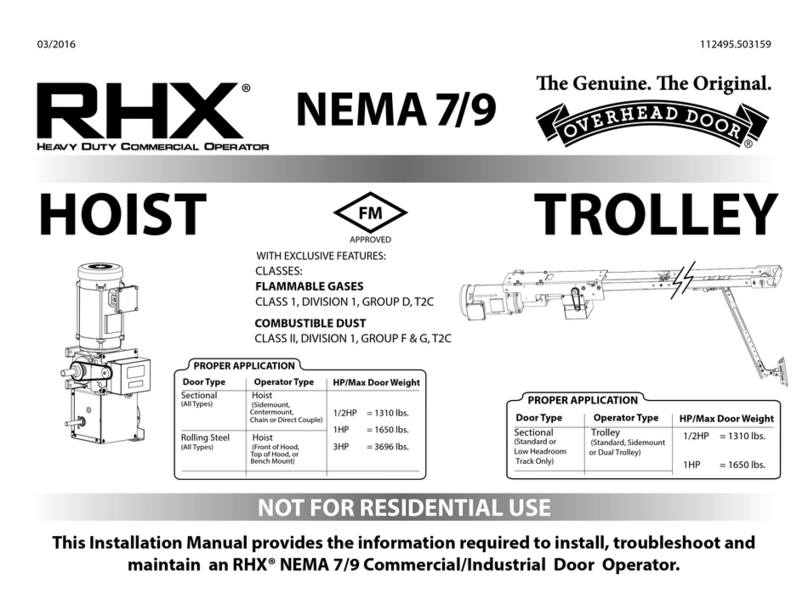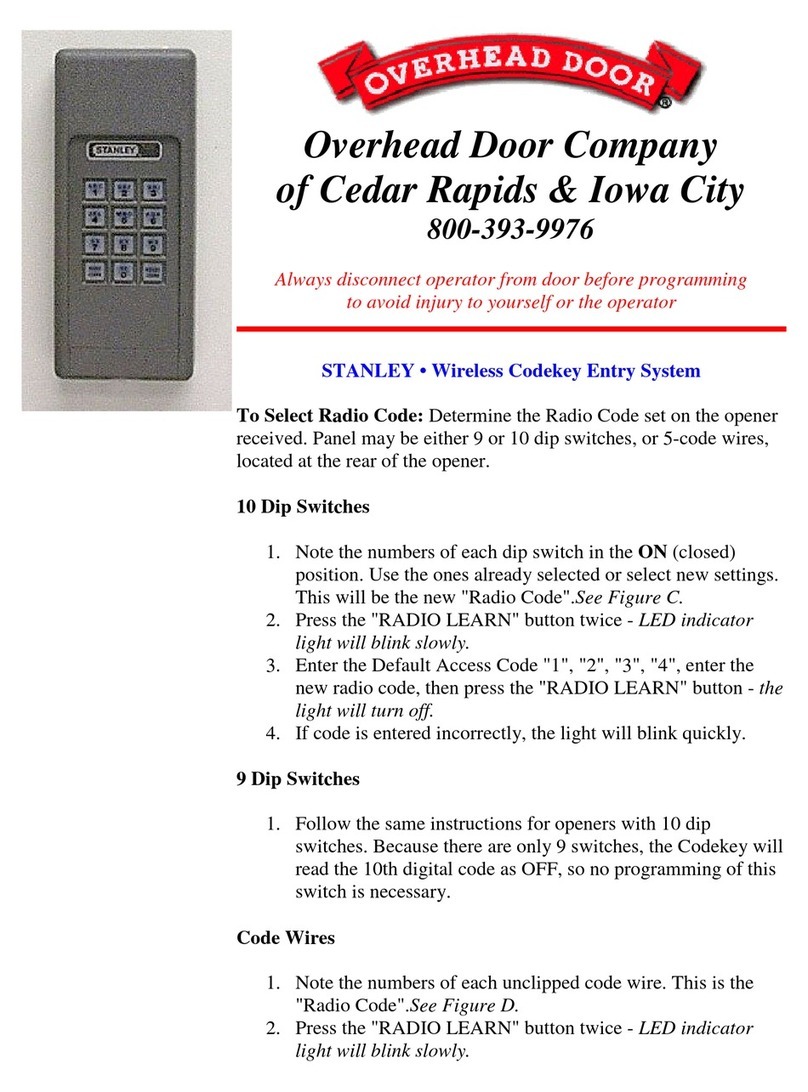
FOR ASSISTANCE CALL 1-800-275-6187 2.1
Section 2: Safety Information & Instructions
1. Read manual and warnings carefully.
2. Keep the door in good working
condition. Periodically lubricate all
moving parts of door.
3. If door has a sensing edge, check
operations monthly. Make any necessary
repairs to keep it functional.
4. AT LEAST twice a year, manually
operate door by disconnecting it from
the operator. The Door should open and
close freely. If it does not, the door must
be taken out of service and a trained
service representative must correct the
condition causing the malfunction.
5. The Operator Motor is protected against
overheating by an internal thermal
protector. If the operator ceases to
function because motor protector has
tripped, a trained service technician
may need to correct the condition which
caused the overheating. When motor has
cooled, thermal protector will
automatically reset and normal
operation can be resumed.
6. In case of power failure, the door can be
operated manually by pulling the release
cable to disconnect the operator drive
system.
7. Keep instructions in a prominent
location near the pushbutton.
WARNING
Overhead Doors are large, heavy objects that move with the help of springs under high tension and electric motors. Since
moving objects, springs under tension, and electric motors can cause injuries, your safety and the safety of others depend on
you reading the information in this manual. If you have any questions or do not understand the information presented, call
your nearest service representative. For the number of your local Overhead Door Dealer, call 800-929-3667, and for Overhead
Door Factory Technical Advice, call 800-275-6187.
In this Section and those that follow, the words Danger, Warning, and Caution are used to stress important
safety information.The word:
:
DANGER indicates an imminently hazardous situation which, if not avoided, will result in death or serious injury.
WARNING indicates a potentially hazardous situation which, if not avoided, could result in death or serious injury.
CAUTION indicates a potentially hazardous situation which, if not avoided, may result in injury or property damage.
The word NOTE is used to indicate important steps to be followed or important considerations.
POTENTIAL EFFECT PREVENTION
HAZARD
MOVING DOOR
Do Not operate unless the doorway is in sight and free of
obstructions. Keep people clear of opening while door is moving.
Do Not allow children to play with the door operator.
Do Not change operator control to momentary contact unless an
external reversing means is installed.
Do Not operate a door that jams or one that has a broken spring
Could result
in Serious
Injury
or Death
Turn off electrical power before removing operator cover.
When replacing the cover, make sure wires are not pinched or
near moving parts.
Operator must be electrically grounded.
ELECTRICAL
SHOCK
Do Not try to remove, repair or adjust springs or anything to
which door spring parts are fastened, such as, wood block,
steel bracket, cable or any other structure or like item.
Repairs and adjustments must be made by a trained service
representative using proper tools and instructions.
HIGH SPRING
TENSION
Could result
in Serious
Injury
or Death
Could result
in Serious
Injury
or Death
IMPORTANT
READ PRIOR TO ANY DOOR OPERATION
WARNING
WARNING
WARNING
07/30/09





























